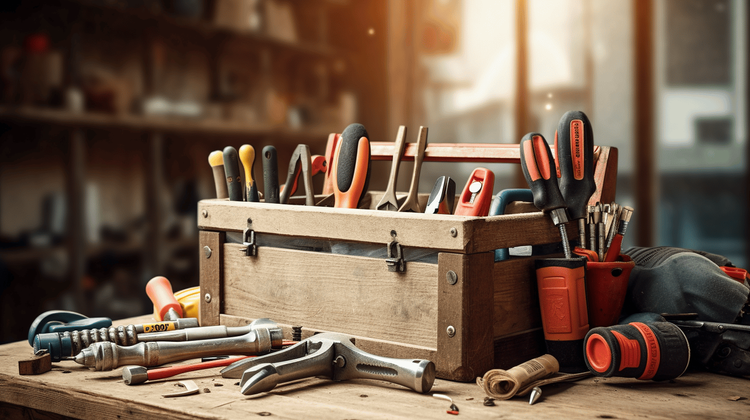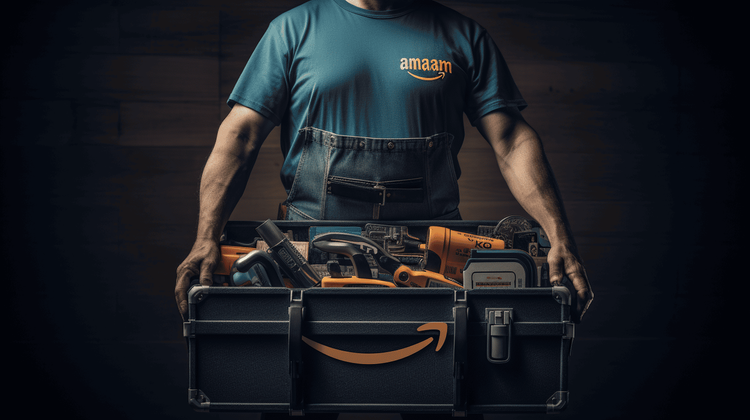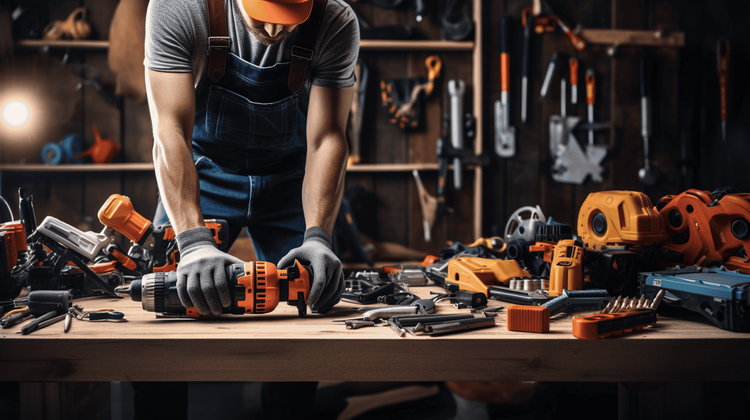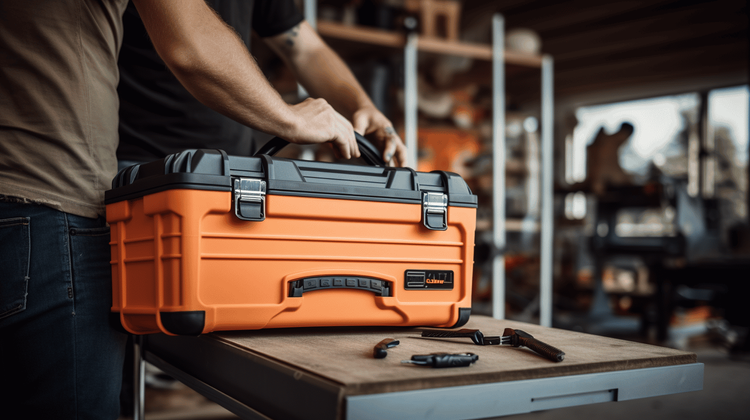Best Budget-friendly Alternatives for Expensive DIY Tools
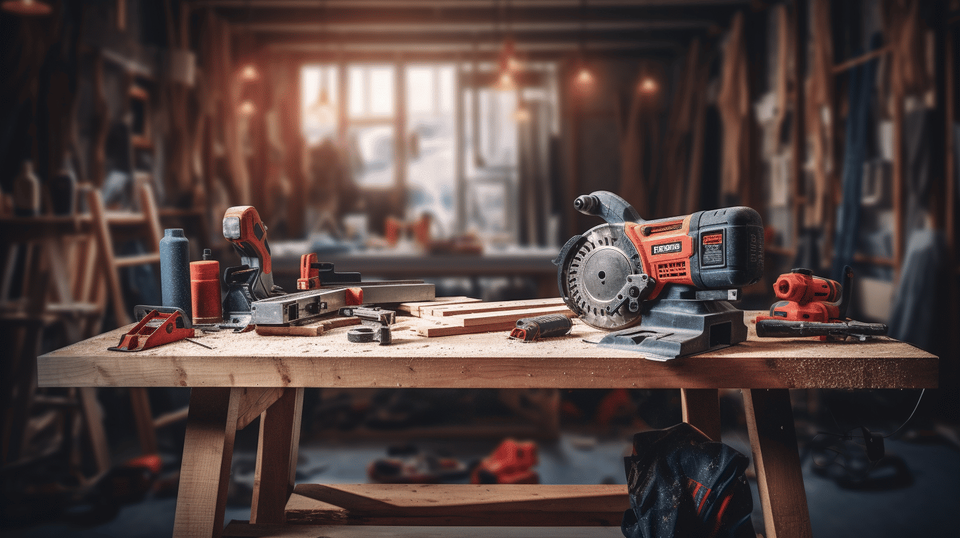
Welcome to a world where indeed, money doesn't always buy happiness. Yes, you heard it right! We're here to discuss the realm of Do-It-Yourself (DIY) projects, where the sheer joy of creating something with your own hands can outshine even the most expensive brands. In this article, we delve into the enticing universe of DIY tools, exploring their rather upscale price tags, and more importantly, presenting you with an abundance of budget-friendly alternatives that can serve the same purposes just as effectively. Is your curiosity piqued already? Then, let's dive right in! 🚀
DIY Tools and their Expensive Price Points
Step into the exciting world of DIY projects—her domain is a wonderland of surprising creativity and practicality combined! However, while the results are often impressive, DIY is not without its pinch: the often hefty price tag of the tools involved. From power tools to gardening tools, let’s break down the cost of diving into this dynamic hobby!
Power Tools
Getting serious about DIY typically means investing in power tools. These are traditionally more expensive due to the addition of a motor and other complex components. For instance, a top-notch cordless drill might set you back a few hundred dollars. Here's a quick look at some typical power tool prices:
- Cordless Drill: Usually in the $100-$200 range. 🏷️
- Circular Saw: Typically around $100-$150. 🧰
- Table Saw: Can run anywhere from $300-$1,500. 😲
Hand Tools
Although hand tools lack the power and speed of their motorised counterparts, they are equally essential for most DIY projects. But don't be fooled by their simplicity; high-quality hand tools come with substantial price tags. After all, quality and durability come at a premium!
- Hammer: Choose a well-made one for $20-$40. 🔨
- Screwdriver Set: Get ready to spend around $25-$75. 🔧
- Wrench Set: A good set can cost $50-$200. 🧰
Woodworking Tools
Crafting masterpieces from wooden planks is another level of DIY finesse that requires specialized tools. From chisels to planers, woodworking tools tend to be in the middle range when it comes to expense:
- Chisels: A decent set might cost around $50-$150. 🪵
- Planer: Depending on the type, planers can cost anywhere from $50 to $600. 🪓
- Router: Higher-end models can reach upwards of $200. 💰
Metalworking Tools
Metalworking tools are serious business. Crafting with metal demands precision and power that necessitates sophisticated—and costly—tools:
- Hand Shears: A quality pair could set you back around $50-$100. 🪚
- Welding Machine: Prices vary widely, from $200 to over $2,000 for professional-grade machines. 🔥
- Metal Lathe: A basic hobbyist model could cost $500-$1,000, while a top-tier professional lathe may reach $10,000 or more. 😲
Gardening Tools
Those with a green thumb spend their DIY time in the garden. Yet even here, the tools required can call for a decent investment:
- Pruning Shears: Premium models commonly range from $30-$100. 🌹
- Garden Hoe: A robust, high-quality hoe could cost $30-$60. 🌱
- Wheelbarrow: Price is dependent on size and material, typically around $50-$150. 🌼
While the prices can seem daunting, remember: top-quality tools last longer, perform better, and can enhance your DIY experience greatly. It’s an investment into your hobby, after all. So, go on, take the plunge into the DIY world and let the creativity flow! 🎉
Reasons Why DIY Tools Can Be Expensive
DIY Projects are thrilling, aren't they? 😃 The sense of accomplishment you feel when you build something beautiful using your own sweat and creativity is incomparable! But, have you ever wondered why DIY tools can be so expensive? Are their prices skyrocketing just because they're popular, or is there more to the story? Today, we're diving deep into the reasons behind the hefty price tags. Stick around, and you might just learn a thing or two!
Specialized Manufacturing Processes
DIY tools aren't your run-of-the-mill everyday items. They aren't mass-produced on a grand scale like, say, paper cups. Instead, these tools usually come from highly specialized manufacturing processes that are often manual or semi-automated. Each tool is designed with precision, care, and an acute attention to detail to ensure safety and efficiency. 🛠️ These processes result in qualitative tools but increase production costs, inevitably causing higher retail prices.
High-Quality Materials
In addition to the meticulous methods of production, high-quality materials contribute to the steep prices. Ensuring that DIY tools last for years and can endure the rigors of different projects, manufacturers opt for the best materials. Tools made from premium steel, hard plastics, and other durable materials aren't cheap. They not only ensure the longevity of the tool but also deliver the best results while working on your project. So, the next time you see a high-priced tool, remember, it's meant to be a lifelong companion for your future DIY endeavors!
Targeted Marketing
Lastly, think about the target market for these tools - it's you, the DIY enthusiasts! 🎯 Companies understand that DIYers are willing to pay a premium for tools that provide reliability, safety, and efficiency. After all, your projects are not just tasks but are extensions of your creativity and they require the best tools to shine. Therefore, companies spend more on advertising, reaching the right consumers, and building brand image. All these marketing costs eventually translate into the pricing of DIY tools.
In a nutshell, expensive DIY tools are a result of high-quality materials, specialized manufacturing, and targeted marketing strategies. Although it may seem a lot in the short run, consider it as an investment for the long haul. After all, good tools are the secret ingredient to magnificent DIY projects, aren't they? 🏆
Budget-friendly Alternatives For DIY Tools
When diving into a world filled with DIY projects, it's not always necessary to break the bank for professional-standard tools. 🛠️ In fact, there are innumerable, inexpensive alternatives that can get the job done just as efficiently (if not more!). So, if your passion for craftsmanship is 'drilling' a hole in your pocket, no worries! This section is your ultimate guide to finding budget-friendly alternatives for DIY tools.
Alternative Power Tools
Strain on the wallet shouldn't be a 'powerful' barrier to your DIY dreams. Here are some pocket-friendly replacements for power tools:
- Jigsaw Instead of Bandsaw: Consider a jigsaw as a handy alternative to pricey bandsaws. Apart from being less expensive, their versatility is something to swear by, making it ideal for casual DIY projects.
- Reciprocating Saw Instead of Demolition Hammer: Demolition hammers can be costly. Opt for a reciprocating saw instead. It's not just economical, it assists in performing similar tasks with less physical effort.
Alternative Hand Tools
High-quality hand tools are often excessively expensive. Check out these budget alternatives:
- Adjustable Wrench Instead of Set of Wrenches: Single wrench pricey? Try an adjustable wrench, a one-size-fits-all solution.
- Hammer Instead of Nailer: A good old hammer is a simple, inexpensive alternative to pricey nail guns.
Alternative Woodworking Tools
Substitute pricey woodworking tools with these alternatives:
- Block Plane Instead of Jointer: A jointer ensures straight and flat wood surfaces but can be pretty heavy on the pocket. A block plane, on the other hand, is affordable and handy for making small adjustments and finishing touches.
- Doweling Jig Instead of Biscuit Joiner: A biscuit joiner can dent your budget big time. Try a doweling jig instead for joining pieces of wood.
Alternative Metalworking Tools
Metalworking can be an expensive hobby. Cut costs with these substitutes:
- Hacksaw Instead of Band Saw: A decent quality hacksaw is a great and budget-friendly replacement for a band saw.
- File Set Instead of Bench Grinder: File sets can handle shaping, sharpening, and smoothing tasks at a fraction of the cost of a bench grinder.
Alternative Gardening Tools
Save some green with these gardening equipment alternatives:
- Hand Pruners Instead of Chainsaw: A chainsaw isn't always necessary for small home gardening tasks. A simple set of hand pruners can handle most cutting tasks.
- Shovel and garden rake instead of garden tiller: Gardening tillers may be efficient, but they can also be expensive. Meanwhile, a good old shovel and garden rake can get the job done with a bit of effort.
And there you have it – a range of budget-friendly alternatives to make your DIY endeavors efficient, effective, and economical. Go ahead and get your hands dirty without worrying about draining your bank account! 🎉
Tips on Choosing Budget-friendly DIY Tools
When it comes to indulging in the joyful world of DIY and home improvements, tools are the heart and soul of every project. However, the price of some tools can often leave DIYers with a feeling of sticker shock. 😱 But don't you worry! This article aims to guide you on how to choose budget-friendly DIY tools without sacrificing quality.
Quality Over Quantity
Just as the old adage says, "Quality over Quantity" still stands true in the realm of DIY. Often, the urge to buy a multitude of inexpensive tools can be tempting, especially when you are on a tight budget. However, remember this - it's better to have a few high-quality tools that can stand the test of time than a bunch of tools that will let you down halfway through a project.
- Start by identifying the essential tools you require. This usually includes a good set of screwdrivers, a durable hammer, a reliable tape measure, and a versatile utility knife.
- Don't fall for flashy deals that promise 100 tools for a suspiciously low price. They might not deliver when you need them most.
- Ensure you are purchasing tools of good quality. This doesn't mean they have to be extravagantly priced, but they should carry a reputation for reliability and longevity.
Saving money doesn't necessarily mean opting for the cheapest option. Selecting good quality tools ensures that your investments last, perform efficiently, and save you costly replacements in the long run.
Second-hand Tools
Another excellent way of finding budget-friendly DIY tools is to opt for used or second-hand ones.
- Local thrift stores, garage sales, or online marketplaces often have tools at slashed prices.
- You may discover well-cared-for tools that need a new home, often from seasoned DIYers who are upgrading their kit.
- Remember to inspect these tools thoroughly for any signs of damage or excessive wear and tear before purchasing.
However, be cautious and don't compromise on safety for the sake of a bargain. Some tools, like ladders or power tools, are usually safer to buy new, where you're guaranteed certain safety standards.
Rent Instead of Buy
On certain occasions, the project at hand may require a specialized tool that you probably won't need again. This is where rental options come into play.
- Several home improvement stores offer tool rental services for a fraction of the cost of purchase.
- Renting not only helps save money, but it also means less clutter in your toolbox.
Whether it's a rare tool or an expensive piece of equipment, consider renting as a viable and economical alternative to outright purchase.
Remember, the key to successful and budget-friendly DIY is smart tool selection. With strategic planning, clever shopping, and a keen eye for deals, you can assemble a dependable toolkit that will serve your creative endeavors without breaking the bank. So, roll up your sleeves and get ready to craft magic with your budget-friendly DIY tools! 🛠️💡💵
Effectiveness of Using Budget-friendly Tools
Doing-it-yourself (DIY) has revolutionized the way we look at creating and fixing things around our homes. Much of this can be attributed to the effectiveness of budget-friendly tools. Be it painting your living room or fixing the creaky door, budget-friendly tools have proven their worth time and again. 🛠️ They become our go-to sidekicks in accomplishing tasks big and small, crafting a sense of efficiency, autonomy and, of course, some savings!
Satisfaction of DIY Projects
One major advantage of using these inexpensive tools comes in the form of immense satisfaction derived from DIY projects. 🎯 Here's an interesting thing to think about:
- Completing a project with tools that didn't cost an arm and a leg is instantly gratifying.
- Cutting down costs elevates the joy of creation.
- Breathing life into your own ideas promotes a purposeful sentiment.
An investment in budget-friendly tools rather than professional services allows for pride in one's own handiwork. 🏆 The joy of witnessing your thoughts manifest into reality is unparalleled.
Practical for Simple Projects
A common misconception filling the air is that budget-friendly tools lack efficiency. However, they prove to be a practical choice for simple projects. The truth? They can get the job done just as smoothly without burning a hole in your pocket. Let's look at a simple outline:
- They handle everyday repairs and maintenance tasks effortlessly.
- Not every task requires costly professional-grade tools.
- They ensure convenience while performing basic operations.
So, remember while you're patching up that wall or assembling a bookshelf, a set of budget tools has your back.
Hands-on Learning Experience
Another edge of using these affordable tools is the hands-on learning experience they offer. 🎓 Everyone's journey of learning the "how-tos" of everyday tasks starts somewhere. These tools permit:
- Learning at your own pace without pressuring your finances.
- Growing competence and confidence in tackling household tasks.
- Facilitating a culture of self-reliance and experiential knowledge.
In the end, the budget-friendly tools are more than just objects that tighten screws or mend broken pieces. They are facilitators, turning projects into fun and educative experiences. They help us forge a direct relationship with our work, weaving a wholesome learning journey.
Remember, greatness isn't always about the price tag. The right set of budget tools can be powerful enablers, helping you weave magic in your daily life, one project at a time! Make budget-friendly tools your secret DIY companion and revel in the satisfaction of a task well done. 🎉
Conclusion
While there's a certain charm in splurging on high-end DIY tools, it's not always feasible, especially for hobbyists or those on a budget. Fortunately, there's an extensive array of quality, budget-friendly alternatives in the market. These affordable tools can facilitate your DIY projects and help you achieve your desired results without burning a hole in your pocket 👛.
However, always remember that low cost doesn't necessarily mean low quality. With careful research, you can find sturdy and efficient tools that deliver excellent performance comparable to their expensive counterparts. One such example is the Bit Holder Keychain from Ultra Handy, an incredibly handy accessory that keeps your diverse screwdriver bits organized and readily accessible.
Ultimately, the key to successful DIY lies not just in the tools you use but also in the passion, creativity, and effort you invest in your projects. After all, DIY is much more than a budget-friendly endeavor; it's a rewarding journey that enables you to convert your vision into reality while learning valuable skills 🛠️. Here's to successful DIY adventures and the satisfaction they bring! Ultra Handy is always here to support you on this exciting journey.
Frequently Asked Questions
- What are some budget-friendly alternatives for expensive DIY tools?Some budget-friendly alternatives for expensive DIY tools include: 1. Renting tools from a local hardware store, 2. Borrowing tools from friends or family, 3. Buying used tools from online marketplaces, 4. Replacing specialized tools with multi-purpose ones, and 5. DIY tool rental services.
- Is it worth buying used tools?Yes, buying used tools can be a cost-effective option, especially if you're on a budget. Just make sure to inspect the tools carefully, ask questions about their condition, and test them before making a purchase.
- Are rental tools a good option?Yes, renting tools can be a great option, especially if you only need them for a specific project. It saves you from the hassle of buying and storing tools that you may not use frequently.
- How can I replace specialized tools with multi-purpose ones?To replace specialized tools with multi-purpose ones, look for versatile tools that can perform multiple functions. For example, a multi-tool or a combination tool set can help you tackle a variety of tasks without the need for multiple expensive tools.
- Where can I find DIY tool rental services?You can find DIY tool rental services through online platforms that connect tool owners and renters. These platforms allow you to rent tools from individuals or businesses in your local area for a specified duration, saving you money compared to buying expensive tools.
